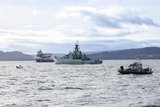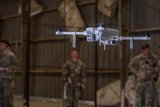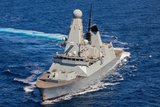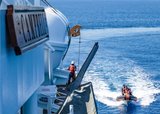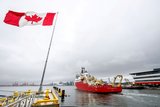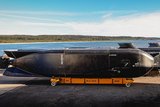USS Arkansas Virginia-class submarine christened
The USS Arkansas was christened on 7 December. (Photo: HII)
Virginia-class attack submarine SSN 800 was christened as the USS Arkansas on 7 December 2024 at HII-Newport News Shipbuilding in Newport News, Virginia.
USS Arkansas will be the 27th Virginia-class submarine, and the eighth within Block IV of the class to be commissioned, with only the USS Iowa and the USS Utah to be commissioned.
Virginia-class vessels are designed to operate in both littoral and deep waters while conducting a variety of missions, including anti-submarine warfare, anti-surface ship warfare, strike warfare, special operations forces support, intelligence, surveillance and reconnaissance, irregular warfare and mine warfare.
Related Articles
Latest Virginia-class SSN commissioned by US Navy despite increasing pressure on submarine service
Virginia-class submarine USS Idaho launched
New Jersey becomes latest Virginia-class submarine commissioned
Carlos Del Toro, secretary of the US Navy, attended the christening ceremony for the Arkansas, and said the boat would represent “the very best of our submarine force capabilities”. He drew comparisons between the strength and courage of the vessel’s future crew and that of its sponsors, surviving members of the Little Rock Nine.
The Little Rock Nine were African American students enrolled in the Little Rock Central High School in 1957, causing a crisis that eventually led to the US Supreme Court Brown Vs Board of Education decision which officially desegrated education by race in the US.
The Virginia class will continue to grow beyond Block IV – 10 boats in Block V have already been optioned and a Block VI with amendments to allow their use by special operations forces has also been planned.
The latest FY2025 US Defence Budget request plans for a total of 51 Virginia-class submarines. Meanwhile, the SSN(X) programme, which is expected to eventually replace the Virginia class altogether, began receiving government funding for design work back in 2021.
Three of the Virginia-class boats have been agreed for sale to Australia in the early 2030s as part of the tripartite AUKUS deal between the US, the UK and Australia, with another two available for optioning. The vessels will boost Australian submarine capability while the UK and Australia work on the newbuild AUKUS SSN.
Related Programmes in Defence Insight
Virginia Class Attack Submarine (SSN 792-SSN 811)
Related Equipment in Defence Insight
More from Naval Warfare
-
![How the use of artificial intelligence will affect the US Coast Guard’s acquisitions]()
How the use of artificial intelligence will affect the US Coast Guard’s acquisitions
The USCG is pursuing AI tools to improve the way the service conducts its procurement and fielding processes.
-
![US Coast Guard prepares procurement of next-gen surface search radar]()
US Coast Guard prepares procurement of next-gen surface search radar
The NXSSR will replace five in-service capabilities and be the US Coast Guard’s primary collision avoidance system.
-
![MBDA-led DragonFire’s latest trials move the LDEW system closer to UK Navy integration]()
MBDA-led DragonFire’s latest trials move the LDEW system closer to UK Navy integration
The DragonFire lines up with other European laser-directed energy weapons being developed in collaboration with MBDA.
-
![US Coast Guard pursues solutions to increase maritime domain dominance]()
US Coast Guard pursues solutions to increase maritime domain dominance
The USCG is seeking technologies, services and applications to better connect its assets and speed up the decision-making process.
-
![Canadian Coast Guard’s OOSV delivery is “major milestone” in fleet modernisation]()
Canadian Coast Guard’s OOSV delivery is “major milestone” in fleet modernisation
The Polar Class 6 platform is the largest CCG science-dedicated vessel and will operate on the country’s east coast.
-
![How the Anduril-HHI autonomous ship plan fits in with the US Navy’s MASC programme]()
How the Anduril-HHI autonomous ship plan fits in with the US Navy’s MASC programme
The new modular vessel is expected to be developed for both commercial and defence use, with a heavy focus on production speed and mission flexibility.







